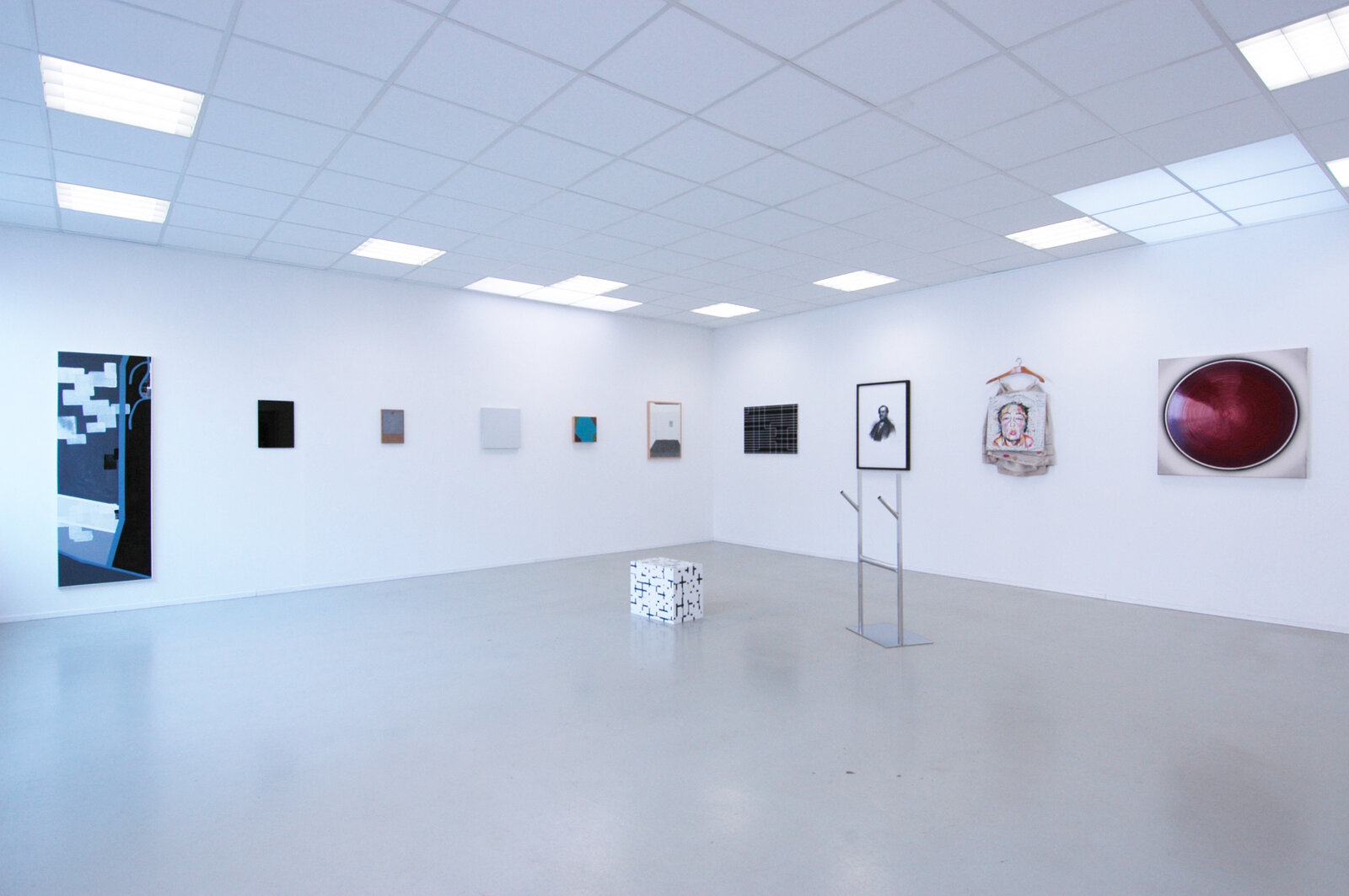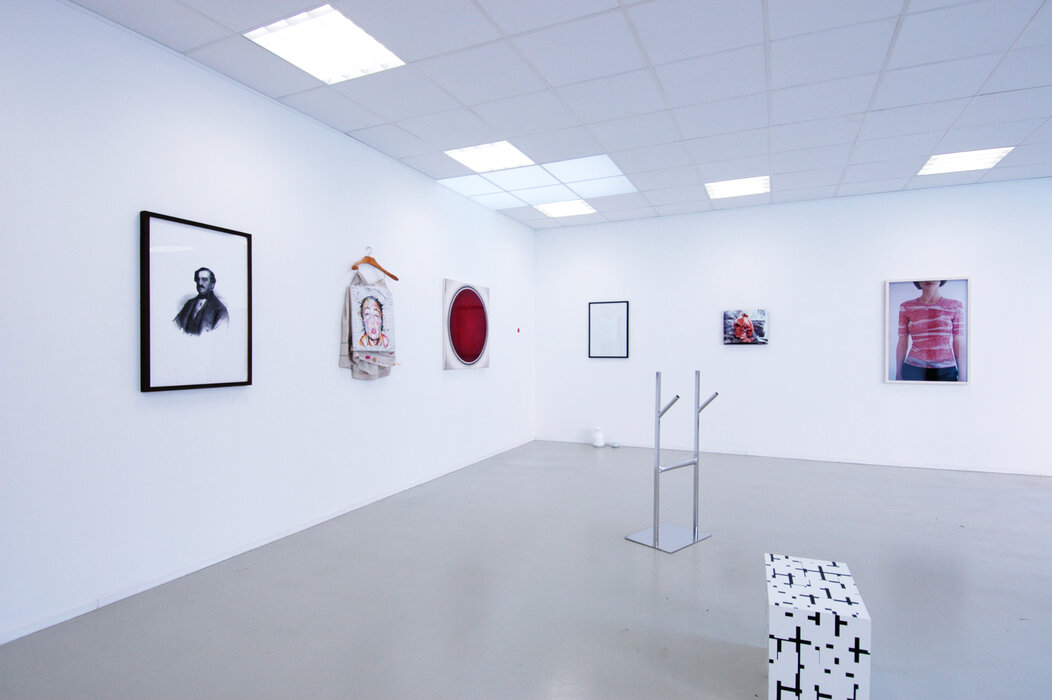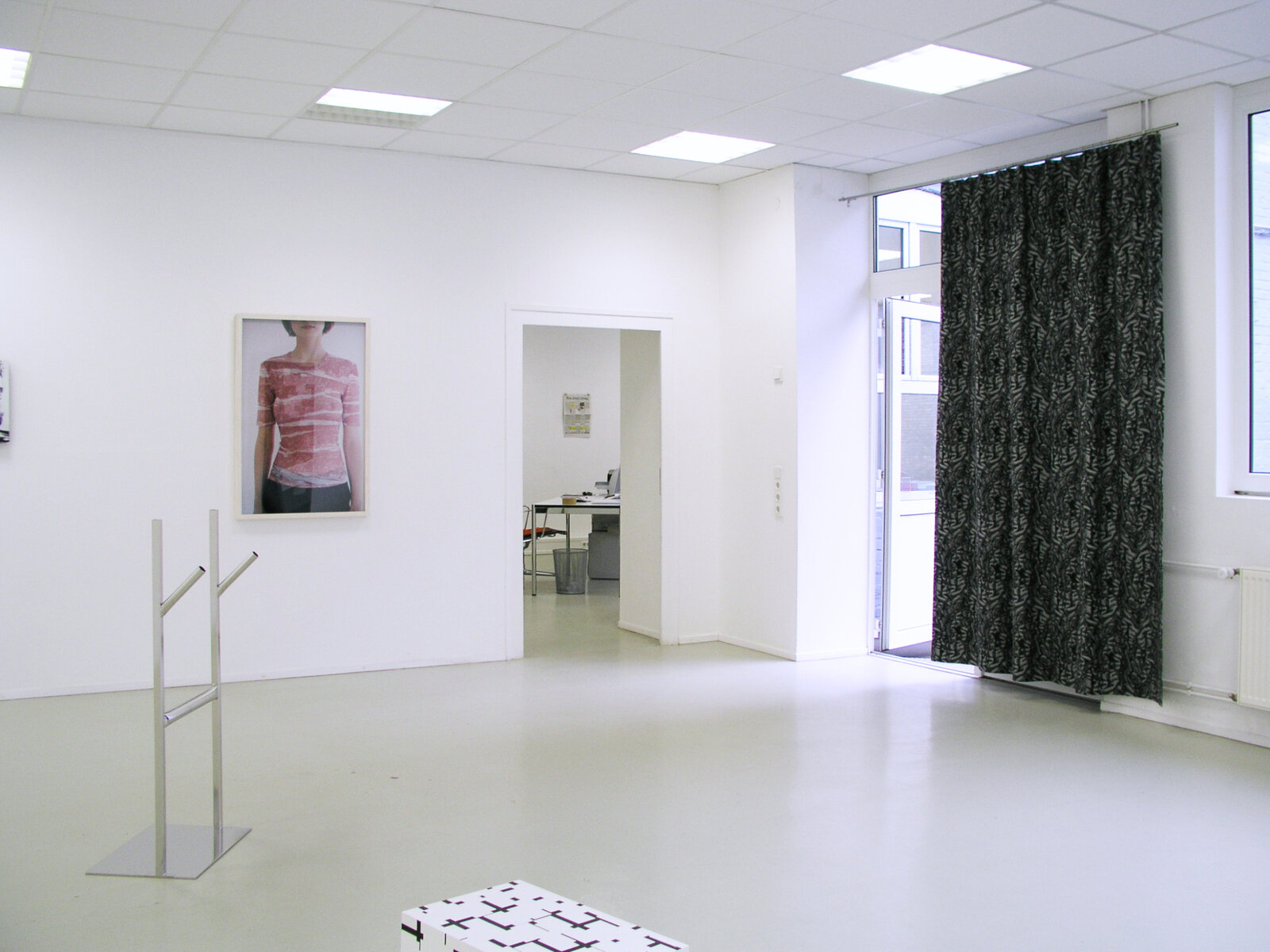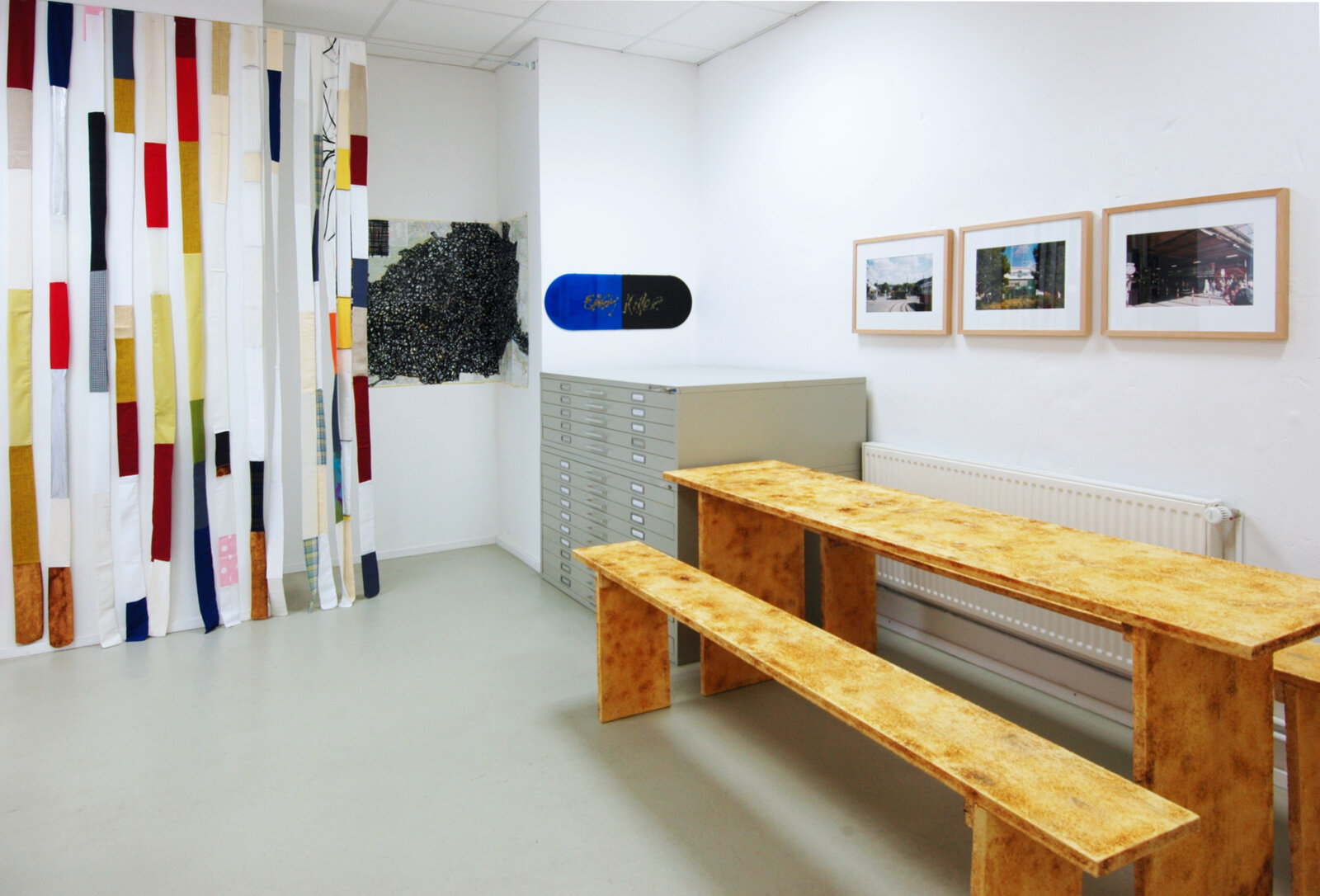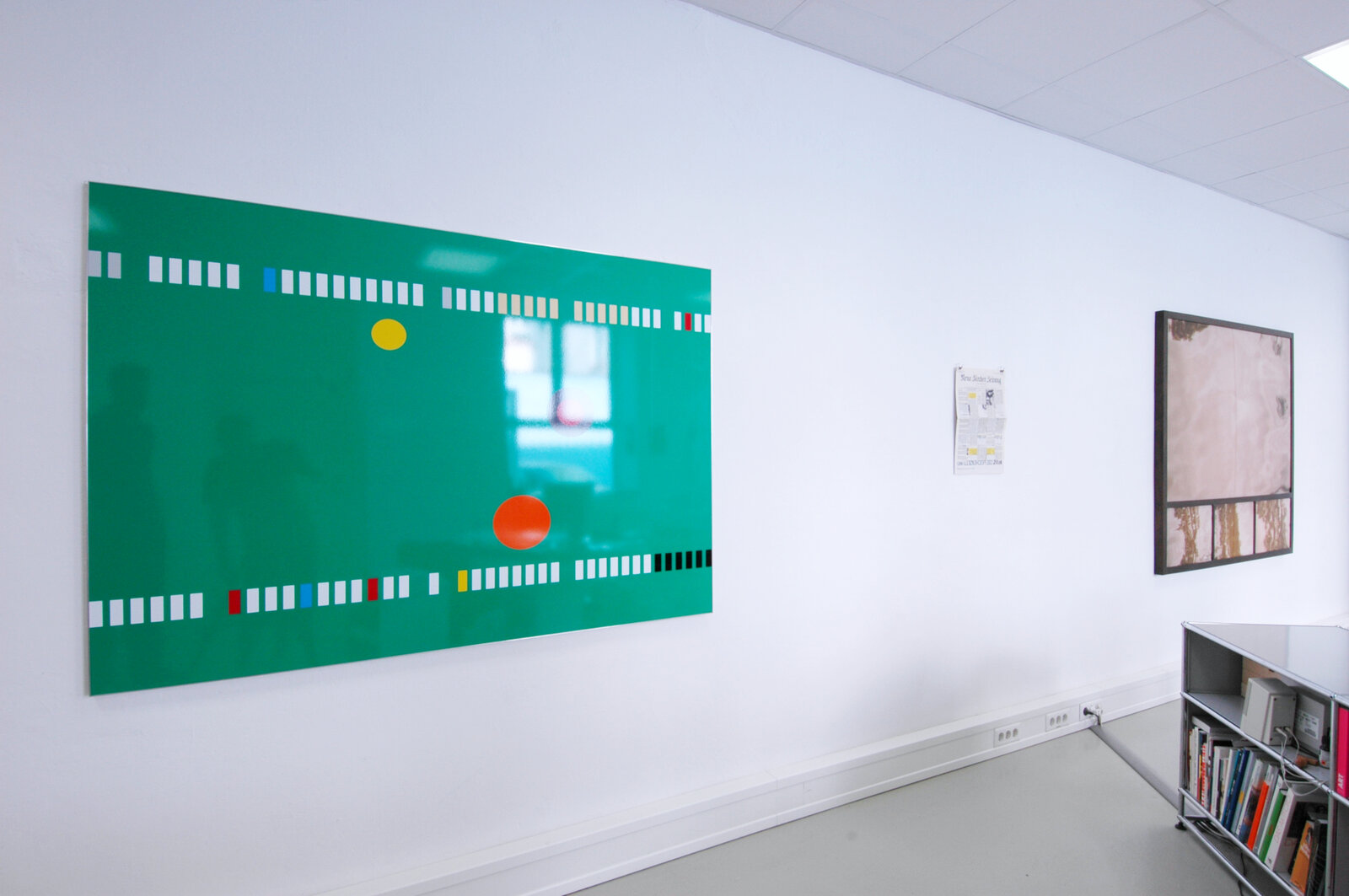Vienna Coffee Table
26.06. - 28.08.2004
Curated by Herbert Hinteregger
Vienna Coffee Table – Views on a cutout of Vienna (concept)
Group exhibition at the gallery Bernhard Knaus / Mannheim (June – August 04; Opening: Saturday, 26th of June 7.00 pm). The exhibition gives a glimpse on the current art production in Vienna and/or about Vienna from a peculiar perspective.
The place, from where we report, about which we talk: Vienna at the Danube. What am I confronted with in the moments while I am approaching, when I have arrived and in a further consequence? To the outside Vienna is full of stereotypes like “Viennese Schnitzel”, “Fiaker (horse cabs), “The Viennese Waltz – at the beautiful, blue Danube”, “Mannerschnitten” (special Austrian cookies) and coffee houses. (One that fully reflects these clichés and has to be mentioned as an especially bad example: the renovation of Café Museum. The place, originally designed by Adolf Loos, has been transformed into a touristy space, with rarely anything left of the former outstanding and rare architecture.)
The question arises, if these stereotypes can possibly contain something more; offer a deeper quality like e.g. aspiration or surprise? The cliché of the Viennese coffee house stands for a widely used picture, which I would like to discuss in more detail. It is used as a metaphor for the general atmosphere and vibration in Vienna, a symbol for an environment that is full of slowness and emptiness. Is the coffee house – the legend tells that the coffee has been imported by the Turks during the siege in 1863 for the first time – a world full of distraction and reassurance? Is the coffee house a place from yesterday?
Opposite to these stereotypes, there is the current position “Vienna coffee table sound” of the musicians Kruder & Dorfmeister, who describe an elegant internal view, a cultivated intellectual boredom. In this context appear monochrome and geometrical paintings, mostly without visible emotion. These are geometrical shapes; arisen out of ornaments, e.g. out of architecture or out of POP and MTV even. On one end of the scale they occur either as trash or as out of everyday life, on the other end of the scale there are extreme pure and clean artworks, but as well offering a subtle, cool elegance, an extra portion coolness. Painting and often not painting, object-oriented, with the characteristics of painting, sleaziness, personal or machine-oriented, highly perfect.
On another stage of the internal view (“Vienna, the city of Sigmund Freud”) emerge figurative positions, reflecting the human body and portraits. Painted portraits from the 19th century, which have been artificially changed, acting neurotic, but always with a slight cynical, but humoristic intention. Painted pictures and self-portraits, in confrontation with photography considered as showing “striptease of the soul”, as radical examination of existential orientation. The export of your own feelings into the outside world – the world as living room, in which you are not completely on your own – the interface between inside and outside – a coffee house.
“The truth is that I have always hated the Viennese coffeehouse because in them I am always confronted with people like myself, and naturally I do not wish to be everlastingly confronted with people like myself, and certainly not in a coffeehouse where I go to escape from myself.” (Thomas Bernhard, Wittgensteins Nephew)
With works by
Clegg & Guttmann, Ana de Portela, Werner Feiersinger, Martin Gostner, Franz Graf, Herbert Hinteregger, Christoph Hinterhuber, Christine & Irene Hohenbüchler, Nicolas Jasmin (N.I.C.J.O.B), Peter Kogler, Elke Krystufek, Thomas Locher, Inés Lombardi, Marko Lulic, Werner Reiterer, Gerwald Rockenschaub, Julie Ryan, Robert Schaberl, Markus Schinwald, Esther Stocker, Gabi Trinkaus, Alexander Viscio, Erwin Wurm, Heimo Zobernig
Vienna Coffee Table – Views on a cutout of Vienna (concept)
Group exhibition at the gallery Bernhard Knaus / Mannheim (June – August 04; Opening: Saturday, 26th of June 7.00 pm). The exhibition gives a glimpse on the current art production in Vienna and/or about Vienna from a peculiar perspective.
The place, from where we report, about which we talk: Vienna at the Danube. What am I confronted with in the moments while I am approaching, when I have arrived and in a further consequence? To the outside Vienna is full of stereotypes like “Viennese Schnitzel”, “Fiaker (horse cabs), “The Viennese Waltz – at the beautiful, blue Danube”, “Mannerschnitten” (special Austrian cookies) and coffee houses. (One that fully reflects these clichés and has to be mentioned as an especially bad example: the renovation of Café Museum. The place, originally designed by Adolf Loos, has been transformed into a touristy space, with rarely anything left of the former outstanding and rare architecture.)
The question arises, if these stereotypes can possibly contain something more; offer a deeper quality like e.g. aspiration or surprise? The cliché of the Viennese coffee house stands for a widely used picture, which I would like to discuss in more detail. It is used as a metaphor for the general atmosphere and vibration in Vienna, a symbol for an environment that is full of slowness and emptiness. Is the coffee house – the legend tells that the coffee has been imported by the Turks during the siege in 1863 for the first time – a world full of distraction and reassurance? Is the coffee house a place from yesterday?
Opposite to these stereotypes, there is the current position “Vienna coffee table sound” of the musicians Kruder & Dorfmeister, who describe an elegant internal view, a cultivated intellectual boredom. In this context appear monochrome and geometrical paintings, mostly without visible emotion. These are geometrical shapes; arisen out of ornaments, e.g. out of architecture or out of POP and MTV even. On one end of the scale they occur either as trash or as out of everyday life, on the other end of the scale there are extreme pure and clean artworks, but as well offering a subtle, cool elegance, an extra portion coolness. Painting and often not painting, object-oriented, with the characteristics of painting, sleaziness, personal or machine-oriented, highly perfect.
On another stage of the internal view (“Vienna, the city of Sigmund Freud”) emerge figurative positions, reflecting the human body and portraits. Painted portraits from the 19th century, which have been artificially changed, acting neurotic, but always with a slight cynical, but humoristic intention. Painted pictures and self-portraits, in confrontation with photography considered as showing “striptease of the soul”, as radical examination of existential orientation. The export of your own feelings into the outside world – the world as living room, in which you are not completely on your own – the interface between inside and outside – a coffee house.
“The truth is that I have always hated the Viennese coffeehouse because in them I am always confronted with people like myself, and naturally I do not wish to be everlastingly confronted with people like myself, and certainly not in a coffeehouse where I go to escape from myself.” (Thomas Bernhard, Wittgensteins Nephew)
With works by
Clegg & Guttmann, Ana de Portela, Werner Feiersinger, Martin Gostner, Franz Graf, Herbert Hinteregger, Christoph Hinterhuber, Christine & Irene Hohenbüchler, Nicolas Jasmin (N.I.C.J.O.B), Peter Kogler, Elke Krystufek, Thomas Locher, Inés Lombardi, Marko Lulic, Werner Reiterer, Gerwald Rockenschaub, Julie Ryan, Robert Schaberl, Markus Schinwald, Esther Stocker, Gabi Trinkaus, Alexander Viscio, Erwin Wurm, Heimo Zobernig
